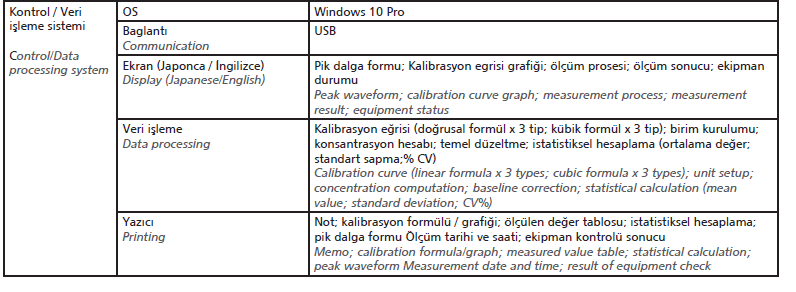Mercury has been widely used in our life. Mercury is roughly divided into three chemical forms: Metalic mercury (R-Hg+). Methylmercury (MeHg) is considered to be an exclusive organic mercury generated in the natural environment. The three chemical forms are inter-converted in the natural environment.
Mercury in the Natural Environment
Mercury has been coming out from under the earth crust to the surface by volcanic explosion throughout the long history of the earth. Mercury currently is widely distributed in the environment; air,water and soils.
Mercury compounds circulate throughout the environment including vaporization from the surface of land and sea into the air and precipitation from the atmosphere to the sea and land. The predominant chemical forms of mercury in the environment.
How can Mercury Enter the Human Body?
Among mercury species, methylmercury (MeHg) and metallic mercury vapor easily enter the human body from the intestinal tract and lung, respectively.
MeHg binds to cysteine (a kind of amino acid) to from a complex whose structure is similar to methionine, an essential amino acid and then incorporated into tissues including brain and fetus via an amino acid transporter.
Dental amalgams are thought to produce metallic mercury vapor, but the body burden of the metallic mercury generated from the amalgams maybe relatively low.
Fate of Methylmercury in the Body
Methylmercury (MeHg) is distributed among various organs in the body after the absorption through gastrointestinal tract and high accomulation is found in liver and kidney. Although the blood-brain barrier protects the brain against xenobiotic toxic substances, the MeHgcysteine complex easily passes through the barrier.
On the other hand, MeHg is excreted from the human body with an averaged daily excretion rate of 1.4% resulting a biological half-life of 50 to 70 days. Since a part of MeHg is taken up in the hair protein, hair mercury can be conventionally used to estimate MeHg exposure levels.
Take Special Care Concerning Mercury Exposure for Pregnant Women
The placenta functions to filter toxic substances in the mother’s blood to prevent them entering the baby. However, MeHg easily passes through the placenta as cysteine-conjugate and accumulates in the fetus.
Since developing nervous tissue of fetus is most susceptible to MeHg, Japanese Food Safety Commission determined, in 2005, that a safe exposure level (PTWI, provisional tolerable weekly intake) for pregnant woman was 2 ug/kg/week.
It is correspond to hair mercury level about 2.8 ppm PTWI was calculated using the maternal hair level 11 ppm, that is supposed to the highest level without adverse effect on the fetus and uncertainty factor 4. Research on the fetal effects of low levels MeHg is still in progress.
Intake Of Seafood
MeHg is generated by microorganisms from inorganic mercury in the aquatic environment, the accumulated in marine organisms via the foof web. Accordingly, the major route of human exposure to MeHg is the ordinary consumption of fish and shellfish. However, there is a wide variation in mercury levels among species.
Large carnivorous fishes, including tuna, swordfish ad shark, often contain MeHg at high concentrations. Marine mammals including tooth whales and dolphins also show high levels.
Pregnant women are recommended to avoid excessive consumption of such fishes, because the developing nervous system of the fetus is highly susceptible to MeHg. Since fish and shellfish are also rich in valuable nutrients, the appropriate consumption of seafood is useful to encourage child growth and to maintain good health.
MA-3 Solo Mercury Analyzer
Affordable robust design with a wide measurement range engineered for affordability, with easy-to-use manual boat loading and a sturdy “quick twist” load lock, the rugged MA-3 Solo is simple to operate and delivers a wide measurement range of 0 to 10,000 ng with quick analysis times ranging from 5 to 12 minutes.
Inexpensive Operation – No Gases or Consumables Required
MA-3 Solo was designed to be as simple to use as possible. Unlike other systems that require purified oxygen gas, purified air is used as the combustion and carrier gas. This design concept makes the instrument perfect for field portable operation or for use in mobile laboratories. The ceramic sample boats are easily cleaned for reuse. No gas requirement and reusable boats keep operating costs low.
Advanced Optics for Superior Sensitivity and Stability
Employing a high-quality thermally stabilized Hg-discharge lamp that emits a very strong, stable line emission at 253.7 nm eliminates the need for any intensity-robbing optical filtering of the source.
Two rugged semiconductor detectors provide the quantitative and reference measurements, ensuring a long lifetime of trouble-free operation. MA-3 Solo uses high quality optical gratings to redirect the full intensity through the sample cell and to the reference detector, for superior sensitivity and stability.
Real Time Continuous Diagnostics
MA-3 Solo’s software continuously monitors key diagnostics, such as all heater temps, flow rates, valve actuations, and voltages. This allows the software to automatically prompt the user if there is an issue, and it also allows for quick and easy troubleshooting for maximum uptime and reliability.
Compact, Lightweight Design for Portability
Engineered for portability, the MA-3 Solo has built-in ergonomic handles and weighs just 13 kg (~28 lbs). It can run on any standard single-phase wall power, from 100 to 240 VAC (50/60 Hz). The rugged design is perfect for field operation or for use in mobile labs.
Windows Based and User Friendly Graphical Software
Running under the Microsoft Windows operating system, the MA-3 Solo’s modern software is intuitive to use and provides a real-time graphical representation of the measurement status.


 Bircan Bozkaya
Bircan Bozkaya
Environmental Engineer
Product Specialist
Trio Teknik Cihazlar



 Bircan Bozkaya
Environmental Engineer
Product Specialist
Trio Teknik Cihazlar
Bircan Bozkaya
Environmental Engineer
Product Specialist
Trio Teknik Cihazlar